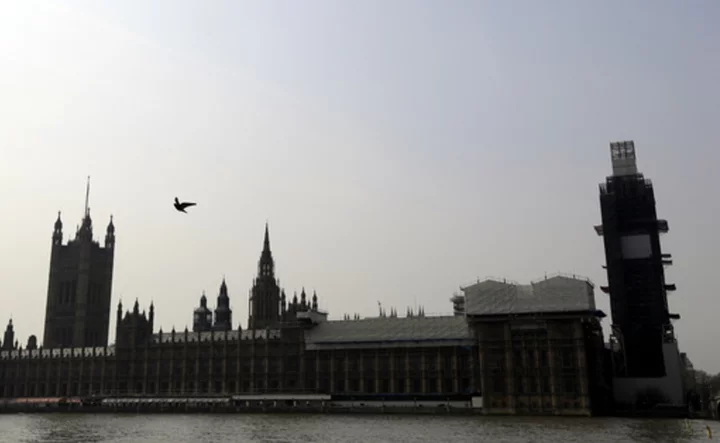LONDON (AP) — Britain’s Parliament building is an architectural masterpiece, a UNESCO World Heritage Site visited by 1 million people a year. It’s also a crumbling, leaky, asbestos-riddled building at “real and rising" risk of destruction, lawmakers said Wednesday.
In a hair-raising report, the House of Commons Public Accounts Committee said the seat of British democracy is “leaking, dropping masonry and at constant risk of fire,” as well as riddled with asbestos.
“There is a real and rising risk that a catastrophic event will destroy” the building before long-delayed restoration work is done, the committee said.
In the most urgent in a series of warnings stretching back years, the committee said renewal work had been painfully slow and mostly amounted to “patching up” the 19th-century building, at a cost of about 2 million pounds ($2.5 million) a week.
The committee slammed “years of procrastination” over the building’s future. In 2018, after years of dithering, lawmakers voted to move out by the mid-2020s to allow several years of major repairs. The decision has been questioned ever since by lawmakers who don’t want to leave; last year, the body set up to oversee the Parliament project was scrapped.
Meanwhile, the building grows more decrepit. The roof leaks, century-old steam pipes burst, and chunks of masonry occasionally come crashing down. Mechanical and electrical systems were last updated in the 1940s.
There is so much asbestos that removing it “could require an estimated 300 people working for two and a half years while the site was not being used,” the House of Commons committee said.
And there is a constant threat of fire. The committee said there have been 44 “fire incidents” in Parliament since 2016, and wardens now patrol around the clock.
Yet lawmakers have been reluctant to green light a more ambitious restoration plan. Some worry the public will resent the multi-billion price tag at a time when many people are struggling to make ends meet. Traditionalists also are reluctant to move out of the historic building with its subsidized restaurants and riverside terrace with magnificent view across the Thames.
The committee said that “the cost of renewal will be high, but further delays are hugely costly to the taxpayer – lack of action is not value for money.”
Opposition Labour Party lawmaker Meg Hillier, who chairs the committee, said there was a “real risk that the whole building will be destroyed by a catastrophic incident before the work is done, or perhaps even begun.”
The committee demanded politicians and parliamentary authorities set out “a clear indication of the cost and timeline for getting this massive job done before it becomes too late to do so.”
History holds a warning for the occupants of Parliament. The current building, designed by architect Charles Barry in a neo-Gothic style, was built after fire destroyed its predecessor in 1834.









